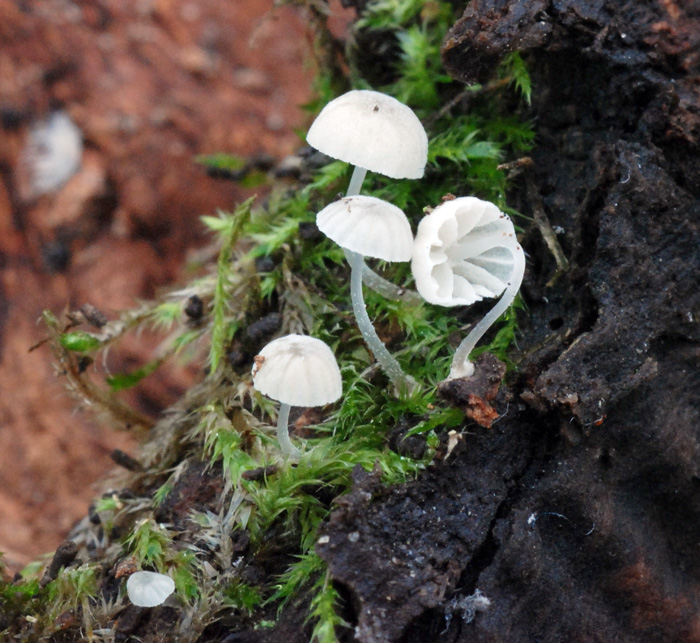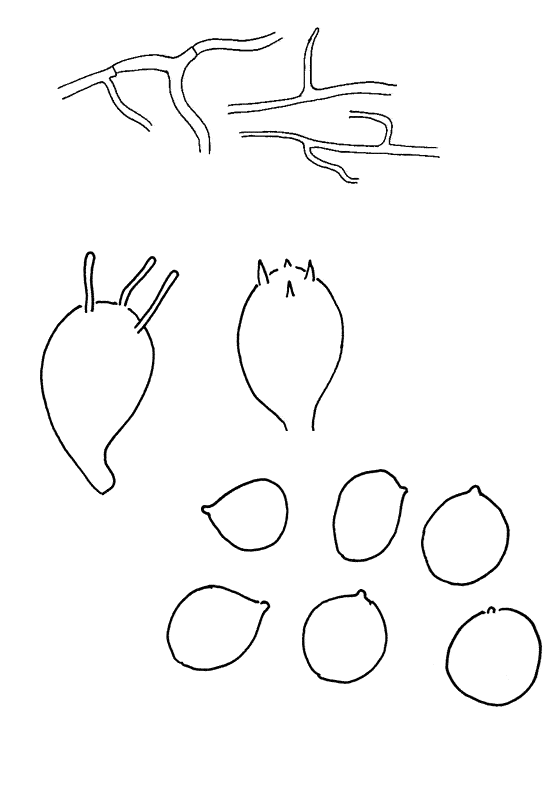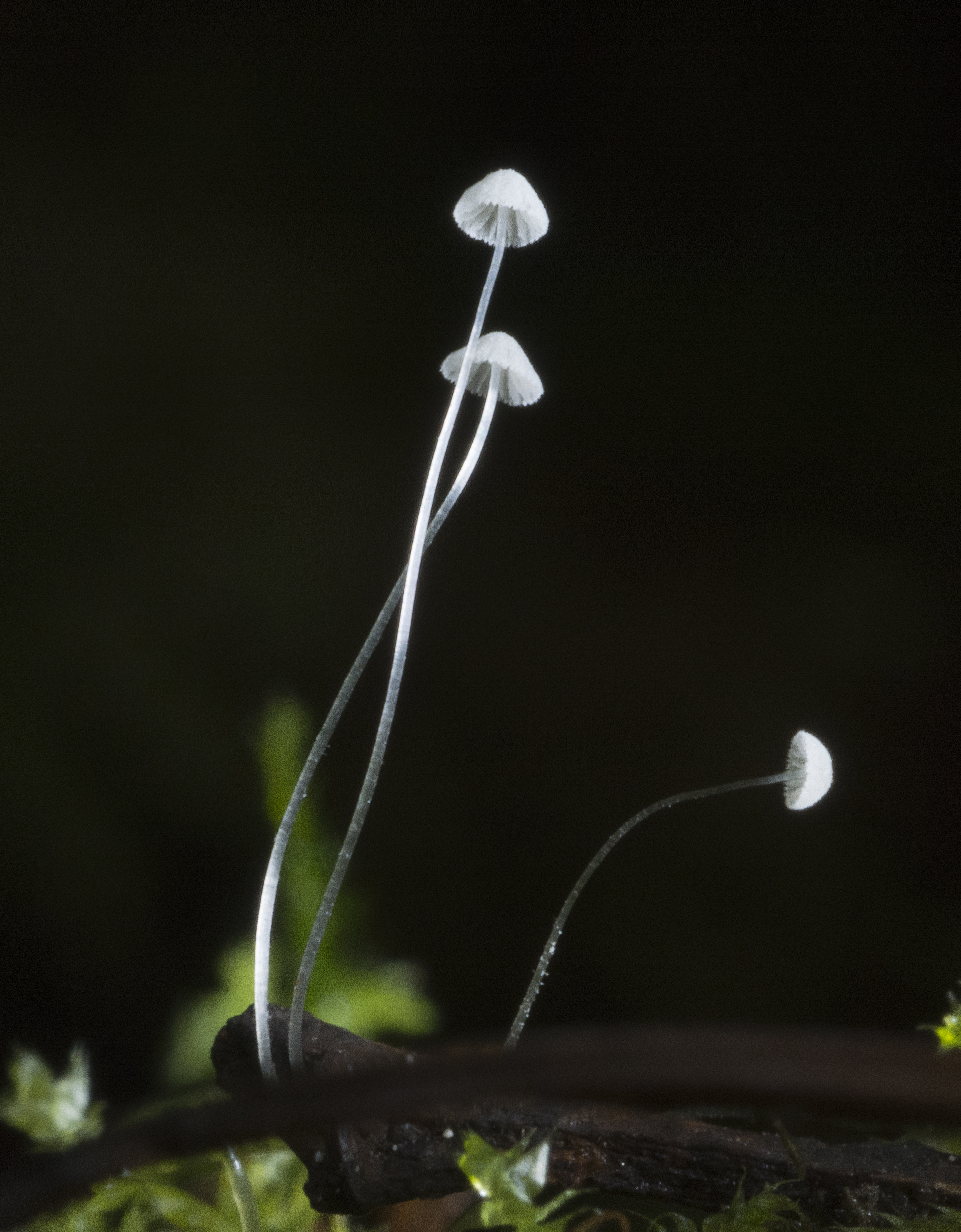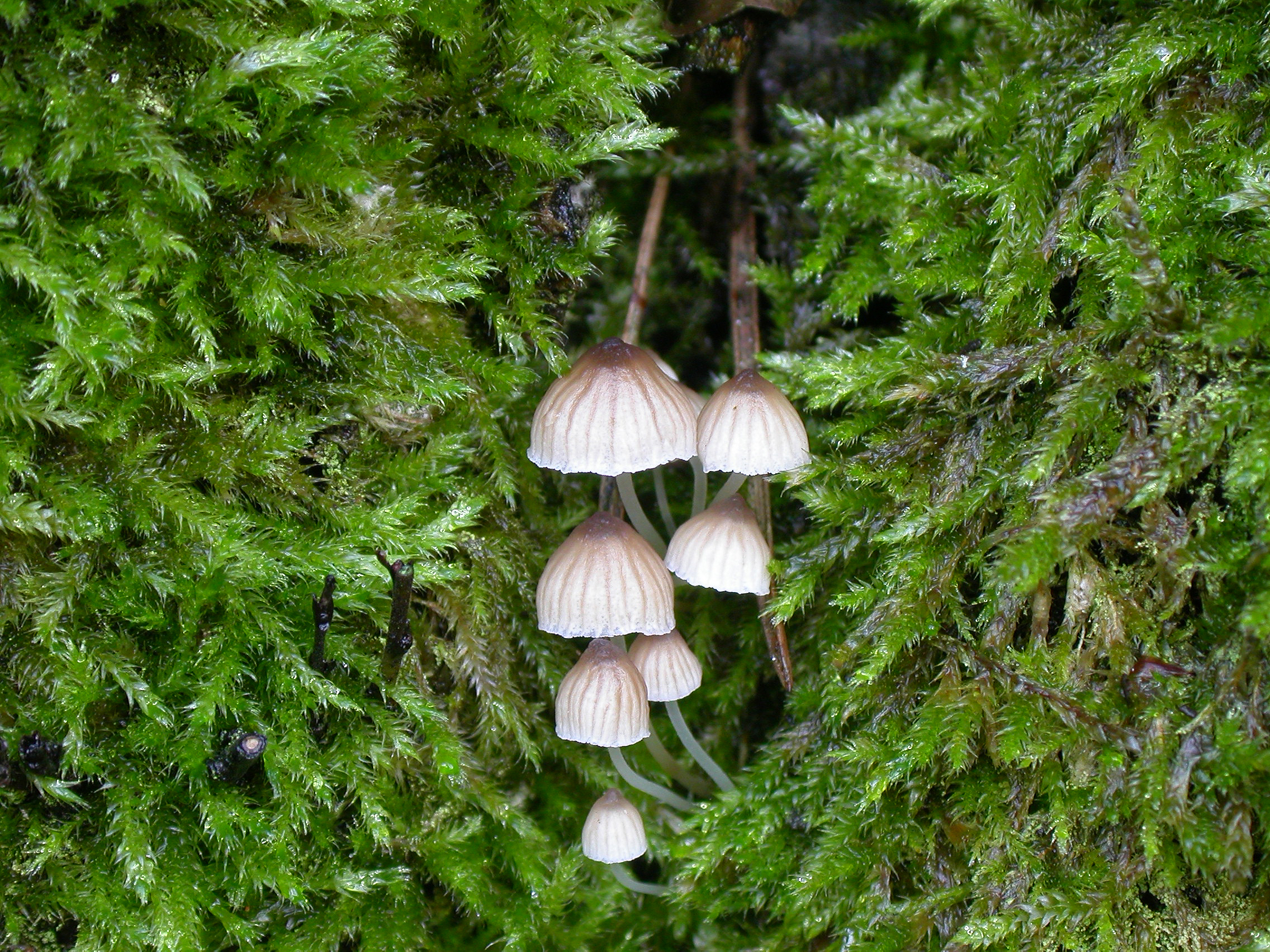Mycena clavularis
Mycena clavularis
Description
Hyphae of the pileipellis, cheilocystidium, basidium and spores.
Cap 2-7 mm across, viscid when moist, covered with a separable gelatinous pellicle, hemispherical, parabolical to convex, shallowly sulcate, translucent-striate, puberulous to finely pubescent, glabrescent, grey, mostly dark grey centrally, turning dingy white with a greyish shade. Gills 7-12 reaching the stem, fairly broad, the edge convex, adnate, soon receding stellately from the stipe, grey to dingy whitish, the edge white. Stem 5- 10 x 0.2-0.5 mm, somewhat elastic, cylindrical, shiny, puberulous, glabrescent except for the lower part, grey to watery grey to whitish, usually darker below, springing from a very small, pubescent, whitish basal disc which is 1-2 mm across. Odour nitrous, sometimes experienced as indistinctive. Basidia 22.5-30 x 13.5-18 µm, broadly clavate to obpyriform, 4-spored, with sterigmata up to 9 µm long. Spores 8-11.5 x 6.5-11 µm, Qav ˜ 1.1, globose or subglobose, sometimes almost triangular, amyloid. Cheilocystidia 17-22 x 8-11 µm, clavate, with fairly few, curved to flexuous excrescences up to 18 µm long, sometimes apparently absent or hard to find, very fugacious. Pleurocystidia absent. Lamellar trama dextrinoid. Hyphae of the pileipellis 1-4 µm wide, smooth, branched and interwined, embedded in gelatinous matter. Hyphae of the cortical layer of the stipe smooth; caulocystidia up to 125 µm long, 2-5 µm wide, more or less inflated at the base, thin- to fairly thick-walled, septate, occasionally branched. Clamps absent.
Ecology and distribution
Growing singly or in small groups on (usually moss-covered) bark of various deciduous trees. Autumn to early winter. Rare.



